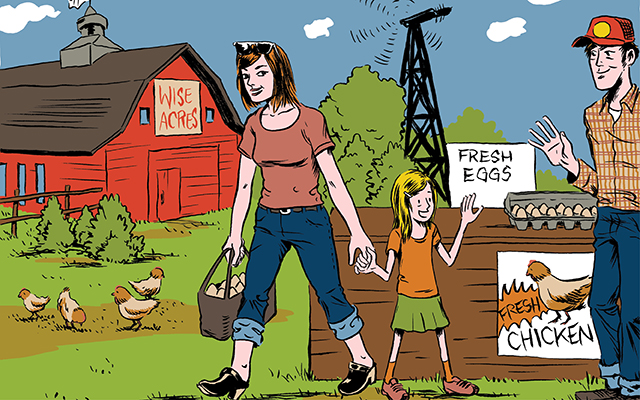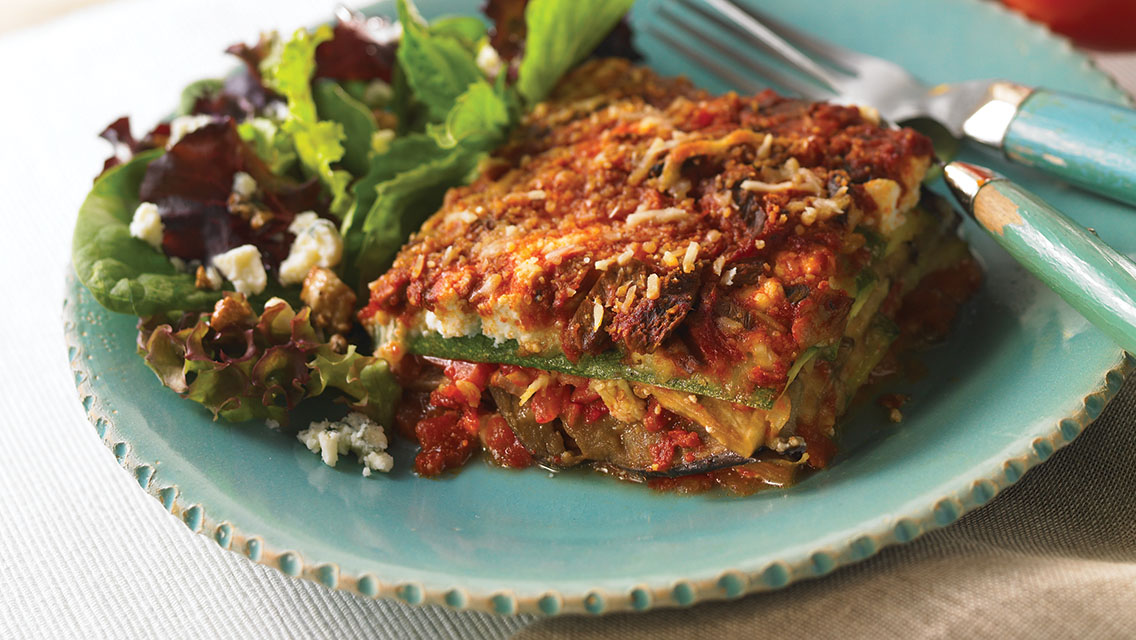Sometime in the last few years, a funny thing happened at a lot of cutting- edge restaurants: The food started coming with an origin story. It started innocently enough, with the name of the farm appended to a particular dish — “Hidden Springs Sheep-Milk Gnocchi,” “Butter Mountain Purple Viking Mashed Potatoes,” “Blue Ribbon Duck-Egg Omelet” and so forth.
Gradually, the narratives about the farmers expanded, until they became positively baroque: “The eggs in tonight’s omelet were harvested by a girl named Sophia, who was wearing a wool sweater knit by her own aunt Sophia, for whom she was named. The sheep who bore the wool for her sweater was named Mr. Wooly . . . ”
Yes, you can wait for the intermission to place your appetizer order.
The inevitable backlash against local food has now begun. Big Agriculture is the only practical way to feed a big world, some are saying, and the idea of knowing your farmer is a romantic, softheaded notion. The leader of this argument is Texas State University historian James McWilliams, author of Just Food: Where Locavores Get It Wrong and How We Can Eat Truly Responsibly (Little, Brown and Company, 2009). McWilliams argues that know-your-farmer food is elitist, expensive, and unrealistic for certain growing regions and many specific foods.
Well, sure. I’ll admit that the first step to feeding the 15 million children in the United States who live in poverty isn’t going to be $4-a-bunch hand-harvested beets. Yet, the small-farming infrastructure in this country has been devastated in the years since World War II, and when restaurant customers pay the admittedly high prices for those hand-harvested beets, they’re not just paying for beets — they’re essentially acting as venture capitalists, funding the start-up costs of many small-scale farms.
In 1990, the market for U.S. organic food was around $1 billion; in 2009, it grew to $25 billion, according to the Organic Trade Association’s 2010 survey. Last year, four out of six American families reported buying more and a greater array of organic products. And now the market for local foods is following suit. Why? Because even as silly as the baroque menu stories have become, the alternative isn’t just silly, it’s terrifying.
The other night, after the kids were in bed, I Googled “salmonella litigation” and unearthed some spine-tingling images of factory farming: I didn’t know manure could be piled quite that high! I didn’t know a factory worker could wade through that many rats! (I guess if that were me, I’d use hip-waders — real thick ones, like they wear on oil rigs!) As the night wore on, my woozy reckonings became more horrific: Really, the innocent consumers who ate the contaminated eggs and survived could be sick for the rest of their lives?
A few years ago, I decided to start buying those fancy organic eggs and free-range chickens like they serve in my favorite restaurants. It’s made my grocery bills more expensive, but I’m a lot less nervous about what I’m feeding myself and my family — and that food is more delicious than anything produced by a factory farm. My eggs come from a tiny farm called Harmony Organics. They are harvested daily from chickens who are free to roam around outside every day. The chickens catch flies, they eat grass, and they produce eggs that are sweet and rich-tasting, with a yolk that’s a deep orange-yellow. When I do eat factory-farm eggs, they taste watered down, like the difference between orange juice and orange juice blended with an equal part of water — just thinner and bland. (To find a pasture-based egg producer near you, try www.eatwild.com.)
My poultry comes from a farmer named Larry Schultz, who has an old-fashioned farm in southern Minnesota where they’ve never used pesticides, and from Pat Ebnet, whose Wild Acres farm in rural Pequot Lakes, Minn., serves many of the best restaurants in the Twin Cities and beyond.
Wild Acres raises not only chickens, but turkeys and various breeds of duck, geese, quail, pheasant and partridge in a way that’s diametrically opposed to the way they do things at big factory farms. Ebnet’s chickens and turkeys are raised in big barns with lots of access to the outdoors; the rest of his birds live under big circus-tent-like nets. (The nets are as much to keep predators out as to keep the birds in. Coyotes, mink and foxes enjoy a nice pheasant dinner as much as anyone.) Ebnet builds the wild birds’ houses out of hay bales and adds plantings of their favorite foods, like millet, sorghum and pumpkins, which draw their other favorite food, bugs. (The water birds have their own lakes, which Ebnet says never produce mosquitoes because the ducks and geese eat all the larvae.) When the Minnesota snow piles up, Ebnet shovels paths for the birds to run through. And he supplements their diets with a special, vitamin-packed feed (mixed locally) that his mother devised in the 1970s, when she started the farm.
If this all sounds like more information than you need to know about your chicken farmer, it probably is. But, once you make the effort to find your own local chicken farmer, you get two great benefits: One, chicken that’s much better than the stuff everyone else is eating; and, two, the knowledge that you’ve done as much as is reasonably possible to avoid products churned out by an increasingly unhealthy factory-farm system.
It’s hard to describe the difference in taste between a chicken raised outside and a factory-farm bird. The word most people use is gamey, but that’s not quite right — it just tastes more chicken-y: richer, sweeter, meatier. Cynics can call me an elitist, but I believe in small family farms. Their food tastes better, it’s more nutritious because it’s fresher, and it’s safer because the farmers tend to be ethical operators.
The food-chattering classes, of which I am a gimlet-eyed member, tend to focus on the sublime deliciousness of foods produced by these small farms. Sometimes, however, I wish we would pay more attention to the duller, economic aspects. For instance, Wild Acres chicken doesn’t just have a cute origin story and name, it has a useful business model. “When I saw this recession bearing down, I had a lot of worries,” Ebnet told me when I reached him on the telephone at his northern Minnesota farm. The worries stemmed from the fact that his poultry costs more than the factory-farm equivalents, and when restaurants struggle, they tend to cut prices.
But the orders kept coming in. When Ebnet asked a couple of chefs about it, they told him that although they were offering fewer items on their menus, they were ordering more of his birds because they wanted his farm to survive the downturn. “That’s the way this business is supposed to work,” he says. “You take care of your customers, and your customers take care of you.”
So the next time you’re subjected to a one-act play on the origin of the ingredients in your salad, grin and bear it. Like the goofy feather on the tri-corner hat of an American Revolutionary soldier, it’s just a little bit of fluff on top of something important.


This Post Has 0 Comments